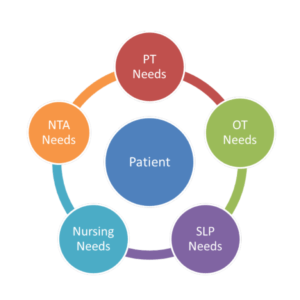Interoperability takes center stage in Washington
At the annual meeting of the Office of the National Coordinator for Health Information Technology (ONC) in Washington, D.C., former Sen. Tom Daschle and former Sen. Bill Frist, MD, shared the stage to discuss the future of healthcare in the United States. Frist described how the U.S. healthcare system is moving away from paying for data and has begun paying for outcomes. Since 2004, when the ONC began coordinating information technology (IT) among over 35 federal agencies, state governments and private stakeholders, the development of standards and interoperability guidance has shaped the delivery of healthcare. Daschle and Frist cited the rapid adoption of IT in hospitals and among physician groups as a result of the 2009 Health Information Technology for Economic and Clinical Health (HITECH) Act, which spawned the “meaningful use” programs in place today.
In a keynote session, Sylvia Mathews Burwell, Secretary of the Department of Health and Human Services (HHS), informed attendees about the agency’s ambitious initiative to tie traditional fee-for-service Medicare payments to quality through the use of alternative payment models, such as accountable care organizations (ACOs)—with the goals of 30 percent of payments by the end of 2016 and 50 percent by the end of 2018. Burwell also announced that HHS will be releasing $28 million over the next two years to increase the adoption and use of interoperable health IT tools and services to support the exchange of health information.
The goal of these grant opportunities is to achieve the safe and secure exchange and use of electronic health information to improve health and transform care. In a follow-up press release to the secretary’s remarks, the ONC indicated that “providers will be engaged from across the entire care continuum, including those who are not eligible for the Medicare and Medicaid EHR Incentive Programs such as long-term care facilities, to be able to send, receive, find and use health information both within and outside their care delivery systems.” This is good news for long-term care (LTC) providers, which were left out of the initial technology-incentive programs provided by the HITECH Act.
To accomplish the goals of outcome-focused, value-based payment programs, ONC continues to push for IT interoperability standards that allow for the sharing of data between settings. In January, ONC released three significant documents that lay out its plans in support of the HHS goals: the Federal Health IT Strategic Plan 2015–2020,5 released Jan. 6; the nationwide interoperability roadmap, draft version 1.0, released Jan. 30; and the 2015 Interoperability Standards Advisory report, also released Jan. 30.
Long-term/post-acute care (LTPAC) was not forgotten during the ONC’s annual meeting or in the strategic goals laid out by Burwell. Outlined during the meeting and in ONC’s Federal Health IT Strategic Plan 2015–2020 are the goals of expanding the adoption of health IT and advancing secure and interoperable health-information exchange. Long-term care was specifically included in the strategic plan, as ONC intends to support IT “adoption and use efforts across the care continuum, emphasizing assistance for health care providers serving long-term and post-acute care.”
While you wait for your piece of the interoperability incentive pie, there are things you can be doing. First, continue to inform yourself about the ACOs and local participants in the bundled payment initiatives that are developing in your area. Learn more about these programs at the CMS Innovation Center. Second, discuss with your software vendor the capabilities of your electronic health record system for exchanging healthcare information with your providers and vendors. Third, consider the mechanisms available to your staff to track your quality measures and resident outcomes.
With the enactment of the Improving Medicare Post-Acute Care Transformation (IMPACT) Act of 2014 on Oct. 6, 2014, the Centers for Medicare & Medicaid Services is working to align the MDS with other assessments in the healthcare continuum. With the alignment of the reporting data through the use of standardized assessments, value-based purchase programs being developed through the innovations center and interoperability outlined by the ONC, the way a nursing home conducts day-to-day business is changing rapidly. LTC leaders and their organizations will be left in the dust of healthcare reform unless they engage in strategic planning and forward thinking.
Judi Kulus, NHA, RN, MAT, RAC-MT, C-NE , is vice president of curriculum development for the American Association of Nurse Assessment Coordination.
Related article: ONC targets interoperability standards and data exchange
I Advance Senior Care is the industry-leading source for practical, in-depth, business-building, and resident care information for owners, executives, administrators, and directors of nursing at assisted living communities, skilled nursing facilities, post-acute facilities, and continuing care retirement communities. The I Advance Senior Care editorial team and industry experts provide market analysis, strategic direction, policy commentary, clinical best-practices, business management, and technology breakthroughs.
I Advance Senior Care is part of the Institute for the Advancement of Senior Care and published by Plain-English Health Care.
Related Articles
Topics: Articles , Medicare/Medicaid , Regulatory Compliance









